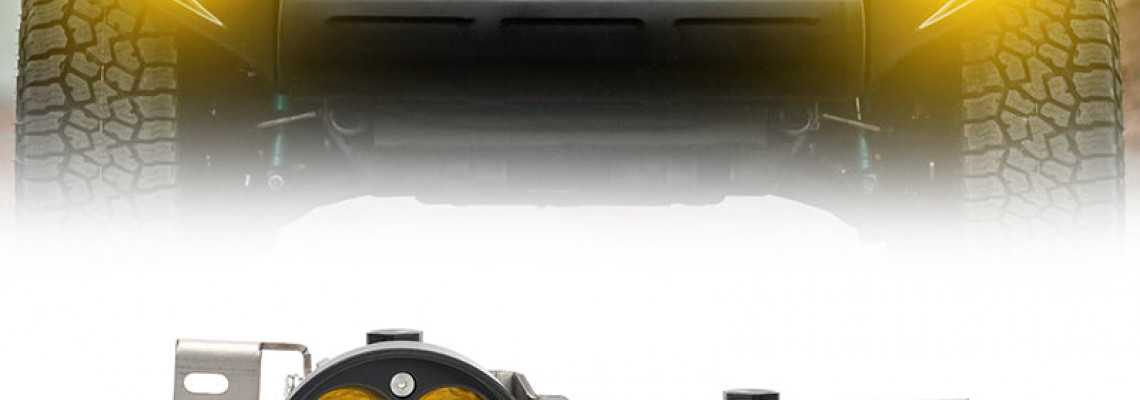The $20 LED Bulb Dilemma: Quality or Quantity?

The $20 LED Bulb Dilemma: Quality or Quantity?
Your truck or car's headlights need to be replaced. You have a limited budget, but that's okay! When auto components are most needed, they are frequently expensive. You search eBay or Amazon and discover a wide selection of LED bulbs under $50, many of which promise stunning brilliance for a small price. When something seems too good to be true, it generally is!
Due to their weak construction and use of inferior materials, these bulbs are inexpensive. They are oversaturating the market and raising irrational expectations for performance. Our goal is to assist you in making informed purchasing selections so that you may locate the best LED bulb for your needs and car.
What Makes a Bad Led Bulb?
In order to save expenses, many low-cost LED lights on the market compromise on quality. Consequently, you can have a defective product that requires frequent replacement or, worse, could endanger your car. There are many more typical mistakes, but we've included a few below.
Positioning and Performance
With a brighter output, LED bulbs seek to replicate the functionality of original equipment manufacturer halogen lamps. The chips in the best-performing LED bulbs line up with the locations of the filaments in halogen lamps.
Unwanted light patterns without constant projection will result from an LED bulb that performs inconsistently. These bulbs must mimic the OEM bulb's light emission pattern because they don't function at their best when placed inside a reflector housing.
Using subpar LED bulbs can lead to a number of issues, most notably ineffective beams. Despite the intensity of the light they create, headlight projections are unable to enlighten the surrounding area sufficiently. There may not be a clear hotspot because of either an abnormally concentrated or diffused beam pattern.
Unfocused beam patterns can make it harder to see approaching traffic. Contrary to popular assumption, the poorly directed beam pattern—rather than the brightness of the bulbs—causes blinding glare for vehicles. This aspect is frequently overlooked in the design of these bulbs.
Building a Better Bulb
Cheap lights frequently have poor construction. A built-in cooling system is essential because even the best LED bulbs produce heat. A heat sink is necessary for LED lights to avoid overheating.
Sure bulbs, such as the Morimoto 2Stroke, include an integrated mechanism that removes heat from the bulb and draws in cool air. This keeps the bulb temperature constant by generating an ongoing cycle. In certain instances, fans—like those found in computers—are mounted outside the lightbulb, like in the GTR Lighting Ultra 2, which completely removes the heat from the bulb.
The built-in heat sinks in commercial light bulbs, however, are sometimes insufficient in size or nonexistent, which prevents the bulb from dissipating heat efficiently. Even if the heat sink materials are present, they may not be able to tolerate the high temperatures of the lightbulb. These elements may cause the bulb to melt or burn out, harming your wiring or headlights and necessitating frequent bulb replacements, which can be expensive over time.
Wiring Woes
Proper wiring is essential for lighting systems to function well. Certain LED lights come with a driver that transfers the required amount of electricity from the car to the lightbulb. In simpler configurations, the driver may be built into the bulb's body, and the bulb and wire would simply connect to the factory connector.
Because of this, lightbulbs frequently overheat or have their power reduced to prevent it. Drivers are more effective at controlling LED bulb power than poorly designed built-in drivers, despite the fact that they might be considerable.
Additionally, faulty connections and "waterproof" wiring that is devoid of the junctions required to stop water intrusion are causes for worry. Water infiltration is prevented by the most dependable waterproof connectors, which have an 'O-Ring' seal that firmly fastens to the wire connection.
While waterproofing problems are more prevalent with LED bulbs sold on different online markets, they are not limited to low-quality LED bulbs.
In summary, selecting a lightbulb with exposed wire or several cables raises the possibility of electrical problems down the road. To avoid any potential short circuits or damage to the car, it is advisable to ask about the installation procedure prior to making a purchase.
Lumen Output Claims
We usually find this situation amusing. These bulbs often use large numbers to trick unsuspecting consumers into believing that they indicate better value and brighter light. But in practice, these stated lumen counts are just not possible.
According to our tests, high-lumen bulbs frequently perform worse than their equivalents with lower-lumen outputs. Even while they might produce bright, concentrated light at first, they eventually give in to the problems we've discussed, which results in bulb failure. The heat sink is frequently the main issue since it cannot manage the wattage from the lightbulb, which can cause burnout or even melting.
These inexpensive light bulbs are standard and, because of their extreme brightness, can be problematic for both users and other drivers. Replacements from the original equipment manufacturer are preferable to these kinds of bulbs.
If you're searching for high-quality LED bulbs for your car, we can assist you in finding the ideal one. We have a range of LED bulbs in our inventory that are appropriate for a number of different car models and sizes. Should you be uncertain about the precise size of your breasts, our experienced staff can assist you in finding the ideal fit? Please let us know your car's year, make, and model. We will provide you with all you need for your trip.